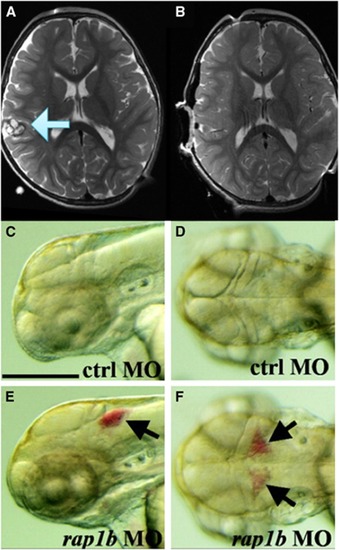Figure 2
- ID
- ZDB-FIG-190723-1630
- Publication
- Walcott et al., 2014 - Zebrafish models of cerebrovascular disease
- Other Figures
- All Figure Page
- Back to All Figure Page
|
Phenotype comparison of zebrafish and cerebral cavernous malformation. In an magnetic resonance imaging of a human ( |

